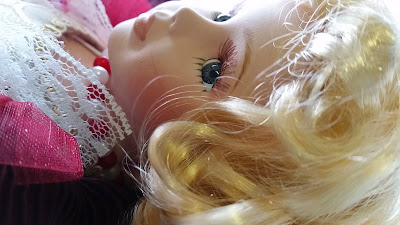We decided to have our exhibition at Islington Mill which provided great space for our work. Before we could go on the 6th to set up ready for the, 7th May, exhibition night we had to decide on a name, whether we were to have a bar open or provide drinks and a logo/image for posters and social media. We all decided after many options that as the exhibition would be on polling night that it could be fun to name it "This is not a polling station". We decided to keep to this theme for the image to go on posters and advertising too. For the bar we all gave £5 to buy drinks for the evening which would be provided on a stand for people to help themselves and we would then have the bar running from 8pm onwards. When we arrived at Islington Mill on the Wednesday we had to unload all the work off of the van and start to work out what order we wanted everything to go in. Once we decided that it was a case of painting the space and plinths. Then we had to decide on a height for everyone's work and start putting up. It was great seeing everyone's work as most of the time you didn't get chance to. I enjoyed working as a team it was great everyone came together to get it done. My piece was originally going to be a spiral, concertina fold book but once I folded the prints I really liked them as structural pieces instead and presented them on plinths. The exhibition night was a major success as we had a great turn out and it seemed that it was not just friends and family members which was brilliant.
My Mark
Wednesday, 13 May 2015
Edition print book.
 |
| My grand mothers china doll. |
 |
| Wrap around cover with silk screen title. |
 |
| Japanese stab stitch book with silk screen title. |
 |
| Practice dry point print. |
Tuesday, 12 May 2015
Development of book binding.
Anna Atkins.
Anna Atkins was a British scientist who produced cyanotypes for botanical books which was a first for scientific publishing and photography. Her work is something I have always wanted try and hope too. I love the simplicity of the colours produced the white against the harsh blue. As the object changes the print produced does too as some become more translucent and others more opaque. To test which objects show up best when exposed and such I decided to try exposing some to go on a screen allowing me to create some silk screen prints.
 |
| My own silk screen print. |
Printmaking artist research.
Therese Oulton's prints are inspiring through the use of composition, colour schemes and patterns she creates. I love the contrast between the muted natural colours to vibrant and bold palettes she uses.
William Blake prints are beautiful with his use of many colours and detail. The way he has been able to create the impression of texture in them is inspiring. His colour scheme choices are another aspect I find inspiring as they give the prints a sense darkness.
 |
| My own dry point prints. |
Artist research from development of painting workshop.
Here are some examples of Frankenthaler's work that inspired me to continue developing my colour samples from the painting workshop I took part in earlier in the semester. I love these paintings for the bold and subtle use of colour schemes and mark making techniques. I really like her composition in each painting with the almost cloud like effect she creates.
 |
| Development pieces from workshop-watercolour painting. |
 |
| Development pieces from painting workshop- acrylic painting. |
WOLS expressionist work is similar to that of Anthony Garratt only they differ in the sense you can make out the scene in Garratt's work whereas WOLS lets you guess and try to understand the emotion that it is conveying. I love this as he uses colour and mark making as tools to present an atmosphere.
Subscribe to:
Comments (Atom)








































